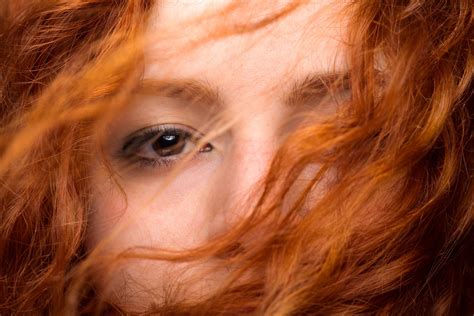The Rarest Hair Color in the World
With only 1-2% of the global population possessing red hair, this distinctive trait is truly a rare sight. In certain countries, such as Scotland and Ireland, the prevalence of redheads is slightly higher, reaching approximately 10%.

A Spectrum of Shades
Red hair comes in a wide array of shades, from vibrant auburn to deep mahogany. The richness of the color is determined by the amount of melanin and pheomelanin in the hair.
Melanin and Pheomelanin: The Secret Ingredients
Melanin is the pigment responsible for giving hair its color. Pheomelanin, a type of melanin, is specifically responsible for the reddish hue. The more pheomelanin, the more intense the red color.
MC1R Gene: The Genetic Determinant
The MC1R gene plays a crucial role in determining hair color. Variations in this gene affect the production of pheomelanin and ultimately the shade of red hair.
Redhead Stereotypes: Fact or Fiction?
Redheads have often been associated with certain stereotypes, including a fiery temper and heightened sensitivity to pain. However, scientific evidence does not support these claims.
Pain Perception and Red Hair
While some studies have suggested that redheads may experience increased pain sensitivity, others have found no such correlation. The relationship between hair color and pain perception remains an area of ongoing research.
Vitamin D: An Important Consideration
Redheads have a higher risk of vitamin D deficiency due to reduced production of vitamin D in their skin. However, this can be easily addressed through dietary supplements or increased exposure to sunlight.
Redheads and Skin Cancer
While redheads are more susceptible to sunburn, they also have a lower risk of developing certain types of skin cancer, such as melanoma. This is attributed to the protective effects of pheomelanin against UV radiation.
Famous Redheads: A Star-Studded Lineup
Throughout history, numerous renowned individuals have proudly sported red hair, including Vincent van Gogh, Lucille Ball, and Ed Sheeran.
Applications of Red Hair Science
The study of red hair has led to advancements in genetics, dermatology, and even cancer research. Researchers are exploring the potential of pheomelanin as a therapeutic agent and developing new treatments for skin disorders.
Tables
| Table 1: Red Hair Prevalence | Table 2: Red Hair Shades | Table 3: Red Hair and Vitamin D | Table 4: Red Hair and Skin Cancer | |||
|---|---|---|---|---|---|---|
| Country | Prevalence | Shade | Description | Deficiency Risk | Reason | Protection |
| Scotland | 10% | Auburn | Vibrant, reddish-brown | Higher | Reduced vitamin D production | Higher |
| Ireland | 10% | Mahogany | Deep, reddish-brown | Higher | Reduced vitamin D production | Higher |
| England | 6% | Strawberry Blonde | Light reddish-blonde | Moderate | Reduced vitamin D production | Moderate |
| United States | 2% | Copper | Orange-red | Lower | Reduced vitamin D production | Lower |
| Spain | 1% | Titian | Bright reddish-orange | Lower | Reduced vitamin D production | Lower |
Common Mistakes to Avoid
- Assuming all redheads have a fiery temper: This stereotype is unfounded and not supported by scientific evidence.
- Neglecting vitamin D intake: Redheads should ensure they consume enough vitamin D through diet or supplements.
- Ignoring skin protection: Redheads are more prone to sunburn, so wearing sunscreen and protective clothing is essential.
- Overestimating cancer risk: While redheads have a slightly higher risk of certain skin cancers, they also have a lower risk of developing melanoma.
How to Care for Red Hair
- Use color-safe shampoos and conditioners to protect the hair’s vibrancy.
- Limit exposure to hot water, as it can strip the hair of its natural oils.
- Avoid over-brushing, as this can cause breakage.
- Deep condition the hair regularly to replenish moisture and prevent dryness.
- Protect the hair from chlorine, which can turn it green.
Conclusion
Red hair is a truly captivating trait that has fascinated humans for centuries. With its genetic complexity, cultural significance, and potential applications in medicine, redheads continue to intrigue and inspire. By understanding the science behind red hair, we can better appreciate its uniqueness and address the needs of individuals with this distinctive characteristic.
